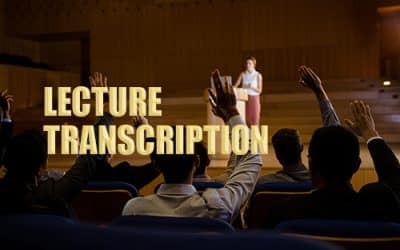
Benefits of Recording and Transcribing Classroom Lectures
- Class recordings provide flexibility by enabling students to access content they need as and when they need it
- Recording the lecture helps decipher unfamiliar and difficult content and vocabulary, which is especially crucial for international students
- Lecture transcription is very useful students with physical or learning disability challenges as it resolves the note-taking challenge
- Recording and transcribing classroom lectures results provides the student with more material at home and in the class
- It helps remote students, students who are absent, and those that need to review the notes later
- The notes can be used to supplement other classes
The First Step – Recording Lectures
Many schools and colleges have rules on recording lectures. So the first thing you need to do is check out your institution’s policies in the matter. Don’t forget to ask for the lecturer’s approval to record the class. You will most likely need to provide a valid reason and proof of your disability to be allowed to record the lecture.
Use a good quality digital recorder that offers good recording sensitivity but works silently so that it will not disturb the class. Choose a handy portable device with sufficient storage capacity and a built-in microphone. Conduct a test run. You should also be aware of the common recording problems that you may encounter. Before you start the recording, ensure that the device has enough battery and memory. Sit in a place where you can hear the speaker clearly. Take notes to support the recording. Save the recording so that you can send it for transcription. This is also useful for future reference.
Choose an Experienced Transcription Company
To get error-free, timely transcripts of the recorded classroom lectures, find an experienced transcription service provider. Such companies are very flexible and accept files in various types of audio and video formats. They will also provide customized solutions, in that you can get your transcript in any style – verbatim, smooth verbatim, summary or rough draft. Accurate and lucid transcripts will help clarify areas in the recording that are not clear. You can even search the transcript for any specific information you want. When combined with handwritten notes, lecture transcription provides you with a valuable learning tool.



